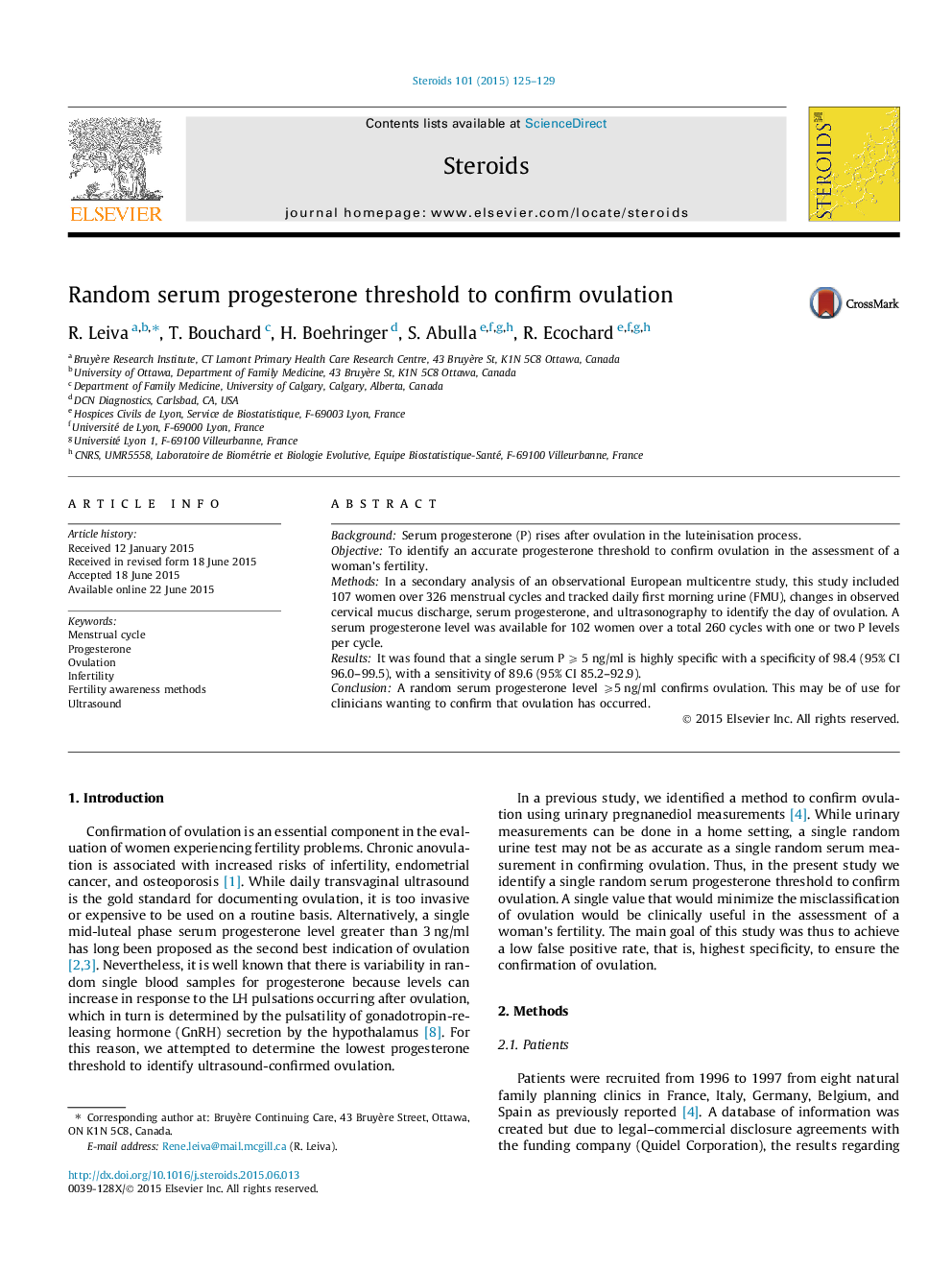| Article ID | Journal | Published Year | Pages | File Type |
|---|---|---|---|---|
| 2027659 | Steroids | 2015 | 5 Pages |
•Serum progesterone (P) rises after ovulation in the luteinisation process.•A random serum P ⩾ 5 ng/ml is highly specific for confirming ovulation.•It has a specificity of 98.4 (95% CI 96.0–99.5).•It provides a sensitivity of 89.6 (95% CI 85.2–92.9).•This finding has practical use in a variety of clinical settings.
BackgroundSerum progesterone (P) rises after ovulation in the luteinisation process.ObjectiveTo identify an accurate progesterone threshold to confirm ovulation in the assessment of a woman’s fertility.MethodsIn a secondary analysis of an observational European multicentre study, this study included 107 women over 326 menstrual cycles and tracked daily first morning urine (FMU), changes in observed cervical mucus discharge, serum progesterone, and ultrasonography to identify the day of ovulation. A serum progesterone level was available for 102 women over a total 260 cycles with one or two P levels per cycle.ResultsIt was found that a single serum P ⩾ 5 ng/ml is highly specific with a specificity of 98.4 (95% CI 96.0–99.5), with a sensitivity of 89.6 (95% CI 85.2–92.9).ConclusionA random serum progesterone level ⩾5 ng/ml confirms ovulation. This may be of use for clinicians wanting to confirm that ovulation has occurred.
